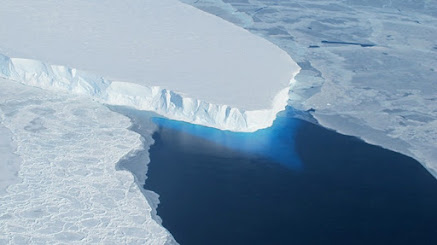Sixth in a series. Read 1 | 2 | 3 | 4 | 5 | 6 | 7
Permafrost is permanently frozen ground. It covers one-quarter of the land mass of the northern hemisphere, and contains 1.5 trillion tonnes of carbon, twice the amount currently in the atmosphere and triple the amount emitted by human activity since 1850. Permafrost buried beneath the Arctic Ocean holds 60 billion tons of methane (in structures known as methane clathrates) and 560 billion tons of organic carbon.Permafrost is releasing significant amounts of greenhouse gases, and feedbacks are under way, but the dynamics are not yet well enough understood to be able to judge whether tipping points have been reached or not. As previously noted (in part 1 of this series), University of NSW researchers point out that: “We do not know exactly how close we are to a tipping point, or even whether we have already passed it… There are tipping points that while not yet triggered may already be fully committed to.”






